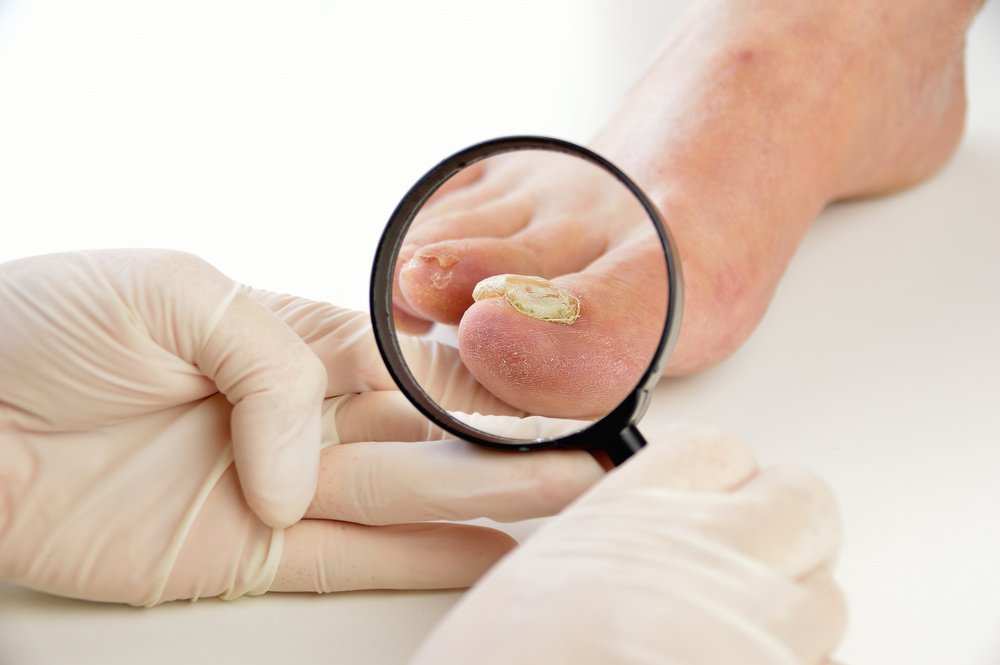Millions struggle with persistent nail infections that worsen without proper care
Nail infections represent one of the most underestimated health challenges facing Americans today, with medical professionals reporting that roughly 10% of the population battles this stubborn condition. The infection, scientifically termed onychomycosis, strikes particularly hard among older adults, with rates climbing dramatically after age 60.
These infections transform healthy nails into thickened, discolored appendages that can crack and separate from the nail bed. While fungal organisms serve as the primary disease agents, yeast and mold varieties also contribute to the growing problem plaguing millions of feet nationwide.
The infection spectrum
Distal lateral subungual variant The most widespread form begins its assault at the nail’s outer edge or side, frequently targeting the big toe or smallest toe. Initial warning signs include distinctive yellow or white streaking patterns that gradually advance toward the nail’s base. Without intervention, affected nails develop brittle edges and begin lifting away from underlying tissue.
Proximal subungual variant This less common but more concerning type originates near the cuticle area and spreads outward across the nail surface. Medical experts associate this variant with compromised immune function, making it particularly troublesome for vulnerable populations. Characteristic symptoms include progressive nail thickening and separation from the nail bed.
Total dystrophic variant Representing the most severe manifestation, this advanced form destroys both the nail plate and underlying root structure. Patients experience significant discomfort and face elevated risks of secondary bacterial infections. Complete nail separation and extensive discoloration mark this devastating progression.
Superficial white variant The most treatable form affects only the nail’s surface layer, creating distinctive chalky deposits or white patches. Early intervention typically yields favorable outcomes for patients diagnosed with this variant.
Environmental triggers and vulnerability factors
Warm, moisture-rich environments create ideal conditions for fungal proliferation, particularly within confined spaces like athletic footwear and synthetic socks. Several factors substantially increase infection likelihood, including advancing age, persistent foot moisture, restrictive footwear choices, previous nail trauma, and underlying health conditions such as diabetes or circulatory disorders.
Healthcare providers emphasize that certain occupational environments and lifestyle choices significantly elevate risk levels. Workers in humid conditions, athletes wearing tight-fitting shoes, and individuals with compromised immune systems face heightened vulnerability to these persistent infections.
Recognition and clinical assessment
Diagnostic indicators Medical professionals identify infections through visual examination combined with specialized testing procedures. Common symptoms include substantial nail thickening, color changes ranging from yellow to brown, brittle or crumbling nail edges, nail separation from underlying tissue, and surface deposits that appear chalky or crumbly.
Laboratory confirmation methods Healthcare providers employ several diagnostic techniques to confirm infections and identify specific causative organisms. The KOH preparation test dissolves cellular material to reveal fungal elements under microscopic examination. Culture methods allow laboratory growth of organisms for precise identification. PAS staining techniques highlight fungal cells using specialized dyes. PCR testing detects fungal genetic material with high accuracy.
Prompt medical consultation proves essential when persistent nail changes occur, as delayed treatment significantly complicates management efforts and reduces treatment success rates.
Management approaches and prevention strategies
Treatment modalities Modern medicine offers multiple therapeutic options depending on infection severity and patient circumstances. Topical medicated preparations provide targeted treatment for mild cases. Oral antifungal medications offer systemic treatment for widespread infections. Mechanical nail trimming or thinning reduces infected tissue burden. Complete nail removal becomes necessary in severe, unresponsive cases.
Preventive measures Effective prevention requires consistent attention to foot hygiene and environmental factors. Avoiding barefoot contact in public facilities like swimming pools and gymnasium floors reduces exposure risk. Daily sock changes and thorough foot drying eliminate moisture buildup. Proper shoe rotation allows complete drying between uses, while regular disinfection eliminates lingering organisms.
Additional protective measures include trimming nails straight across rather than curved, sanitizing nail care instruments after each use, selecting breathable footwear materials, and choosing moisture-wicking sock fabrics.
Older adults and individuals managing chronic health conditions benefit from regular professional foot examinations and preventive care programs designed to identify problems before they become severe.
Understanding these persistent infections empowers individuals to recognize early warning signs and seek appropriate treatment before complications develop. Early intervention remains the most effective strategy for maintaining healthy nails and preventing long-term complications that can significantly impact quality of life.









